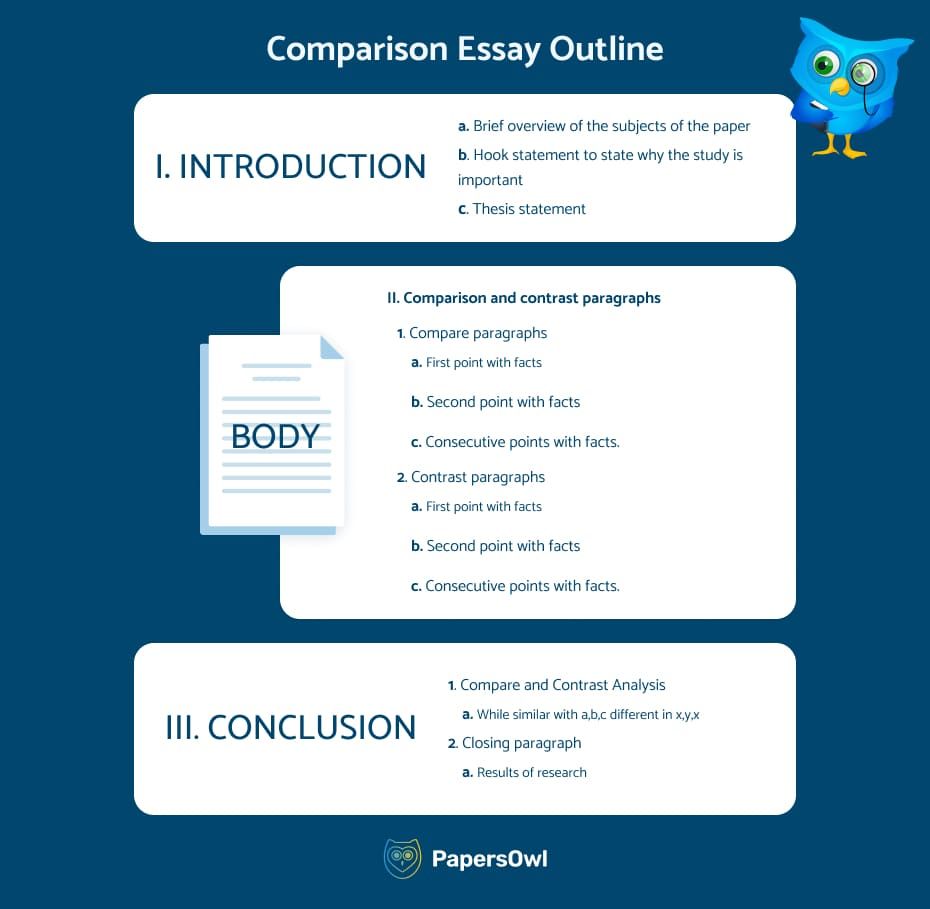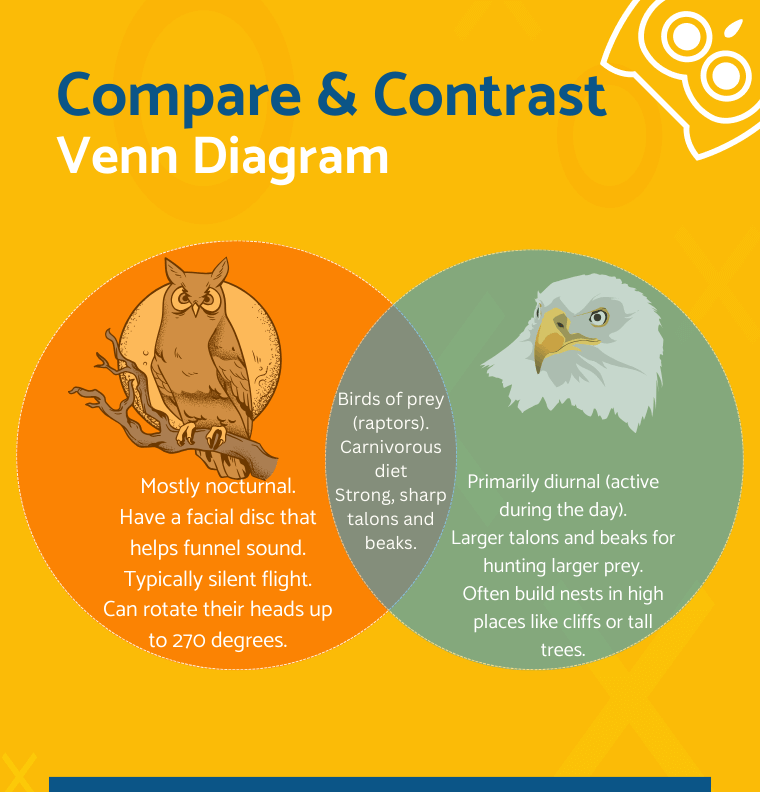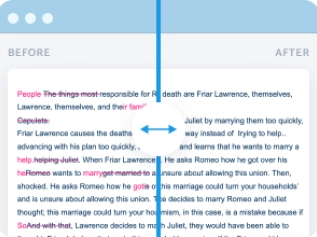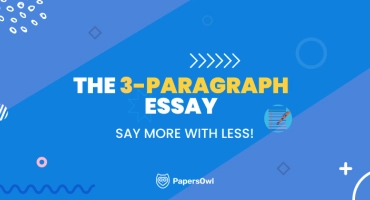How to Write a Comparison Essay: From Similarities to Differences
Table of contents
- 1 What’s a Comparison Essay?
- 2 Pre-Writing Stage
- 3 Structure for Comparative Essay
- 4 Block Method vs. Point-by-Point
- 5 How to Write a Compare and Contrast Essay Outline
- 6 How to Choose a Topic for a Great Compare and Contrast Essay?
- 7 Tips to Write a Compare and Contrast Essay
- 8 Comparison Essay Format
- 9 Outline Examples
- 10 Transitional Phrases & Writing Tips
- 11 Final Thoughts
A sharp compare and contrast essay outline is like an essay’s cheat code — it assists you in creating a paper that actually slaps.
Whether for a middle school project or a deep college dive, an outline gives your writing solid flow, keeping your thesis on fire and focused. Using outlines can boost clarity by up to thirty per cent. You avoid chaos and keep your thoughts chill by driving out key differences and similarities ahead of time.
For more on building that winning outline, check out PapersOwl. Don’t just wing it — start with a plan that hits. Deadass, having your essay game plan locked in = way less brain bang.
What’s a Comparison Essay?
A comparative essay outline is your cheat sheet for creating an essay that breaks down the real tea between two topics. It structures your notions and helps you compare and contrast like a pro. Each section hits on a specific vibe — what’s similar, what’s different — and keeps your reader’s attention glued from start to finish.
Whether you’re analyzing two texts in class or comparing trends, memes, books, or even TikTok vs. YouTube, this outline keeps everything in check. You ought to know that the statement is the main point. It explains to your reader what to expect. Then, the body paragraphs dive deep into each comparison point, without losing focus or going off-track.
Think of it like building a playlist: each song (or paragraph) has its purpose but still fits the overall vibe. When your essay has a solid roadmap, your points slap harder and vibe together.
Pre-Writing Stage
Before you dive into the actual writing, take a minute and sketch out a grounded compare and contrast paper outline. Think of it as your GPS for the whole essay journey. This step helps you lock in your subject, sort out the key points, and avoid getting lost mid-draft. Focus on the first subject first, then tackle the second — don’t mix them up just yet.
Whip out a Venn diagram to visually map out the similarities and differences. Combine specific examples that actually back your points instead of just throwing vibes. Each paragraph in your outline should carry weight, comparing or contrasting something real, not fluff.
It keeps your thoughts on track, your skeleton tight, and saves the stress later. Trust — your future self will thank you.
Thesis Statement
A well-shaped thesis statement doesn’t just present a topic — it sets the compass for your essay. Think of it as “the spine of your argument,” steadying your ideas as they unfold.
Your thesis should hint at the similarities and differences between the first subject and the second, offering the reader insight into the aspects you’ll compare. A sound claim like this anchors each paragraph and supports your essay’s overall path. For a useful reference, explore this compare-and-contrast thesis guide.
An impactful thesis statement should introduce the subject and suggest the contrast worth examining. “If you don’t know what you’re arguing, your reader won’t either.” Begin with a solid example — it highlights your central idea and helps define your focus.
Structure for Comparative Essay
So, you’ve gotta compare and contrast two things? Bet. Don’t wing it — use a setup that makes your essay hit hard. There are two chill ways to lay it out: the block method and the point-by-point method.
- With the block method, you spill all the deets about the first topic (no cap), then slide into the other subject in the next part. [Pro tip: Keep your tone consistent, or it’s gonna feel like two random essays stitched together.]
- The point-by-point method is like a one-on-one comparison battle — each paragraph zooms in on one angle and compares both sides. Think: “Topic: social impact → Subject A vs Subject B” back-to-back. It’s 🔥 when the similarities and differences are super specific.
- Kick off with an introduction that slaps. Drop a thesis statement that makes your reader go “oh, okay, I see where this is going.” [Remember: This is your essay’s vibe check.]
- Before you write, sketch a messy little Venn diagram (yes, like in 5th grade — but it actually helps) to map out your important points. Don’t sleep on this — it keeps you from going off track later.
- When you hit the body paragraphs, don’t just vibe — discuss for real. Break stuff down with specific examples and hit ‘em with solid evidence. You gotta show receipts, not just opinions. 💅 [Pro move: Throw in some stats or quotes to prove you actually did your homework.]
- Then wrap it up with some deep final thoughts. Loop that thesis back around and hit hard with the significance of your whole comparison. Like fr, why does this even matter? Make it hit so they remember what you said long after the scroll ends.
Block Method vs. Point-by-Point
When you’re tryna write a fire compare and contrast essay, the setup lowkey matters. You’ve got two main ways to go: the block method and the point-by-point structure. Both keep your essay lookin’ clean, just with different vibes. Pick the one that makes your points hit hardest and keeps your thoughts from becoming word salad.
Point by Point Structure
This method breaks the essay into body paragraphs that each target one specific point. You alternate between the two subjects to discuss their similarities and differences. This approach helps readers easily follow the comparison and understand how each point applies to both subjects. It is useful when you want to identify subtle contrasts or nuanced similarities.
Block Method
The block method tackles one subject at a time. You cover all the important points about the first subject in one block of paragraphs, then move on to the second subject. This lets you build a complete picture of each subject before moving to the next. The block method compare and contrast works well when each subject needs a detailed, uninterrupted discussion before moving to the next.
Both methods need a clear thesis statement to guide the essay. Your introduction should prepare the reader by outlining the comparison and setting up the contrast essay.
Comparison Overview
| Aspect | Block Method | Point by Point Structure |
| Structure | *Subject by subject | *Alternating points across two subjects |
| Body Paragraph Focus | *All aspects of one subject at once | *One point comparing both subjects |
| Reader Follow | *Easier to separate subject focus | *Easier for detailed comparisons |
| Thesis Statement | *Guides a full picture of each subject | *Guides specific comparisons per point |
| Usefulness | *Good for distinct, unrelated subjects | *Good for closely related or complex points |
| Writing Process | *May feel repetitive | *More dynamic, but requires careful planning |
| Example | *Describe one farming method, then another | *Compare two farming methods by soil impact |
How to Write a Compare and Contrast Essay Outline
Creating a solid compare and contrast essay outline is key to smooth academic writing. Follow these steps to organize your essay clearly and logically.
- Choose the Applicable and Comparable Subjects.Start by selecting two relevant subjects to compare. Make sure they have enough similarities and differences to discuss. This helps you create a targeted comparison.
- Research.Gather data or other applicable information you need about each subject. Keep key points, specified details, and evidence presented. The appropriate research strengthens the thesis statement and supports contrast.
- Write Thesis Statement.Develop a clear thesis statement to convey the main idea and your stance. It should highlight the significant aspects of your comparison and prepare the reader for the essay.
- Pick a Structuring Method.Choose between the block method and the point-by-point method for organizing your outline. The block method covers all points about the first subject before moving to the other. The point-by-point structure switches back and forth between subjects to directly compare each point.
- Fill in the Details.Outline your main points in paragraphs with strong topic sentences. Use specific examples for each subject to clarify your arguments. Ensure your outline is clear so readers can easily follow your thoughts.
- Proofread.Review your outline carefully. Check that your thesis statement is clear and the essay’s focus is consistent. Confirm that you have effectively balanced the similarities and differences throughout your plan.
For a detailed guide, check out the good essay outline resource at PapersOwl. It offers practical tips on how to write and refine your outline step by step.
Compare and Contrast Essay Outline Example

Here’s a simple example of how to structure your outline:
I. Introduction
- State your thesis statement clearly and introduce the two subjects you will compare.
II. Body Paragraph 1 (Block Method)
- Discuss the first subject and the important points and evidence presented.
III. Body Paragraph 2 (Block Method)
- Cover the second subject similarly, concentrating on contrasts and similarities.
- Alternatively, use the point-by-point structure to alternate between subjects on each point.
IV. Conclusion
- Sum up the main points, restate the thesis, and highlight the key differences and similarities.
This structured approach makes your academic writing easier and ensures the reader’s attention stays engaged.
How to Choose a Topic for a Great Compare and Contrast Essay?
Picking the right subject sets the foundation for a strong outline for a compare and contrast essay.
- Look for topics with enough similarities and differences to create meaningful points. This balance helps you compare and contrast effectively and keeps the reader engaged.
- Begin with some research. Find two subjects that offer clear main points you can explore. Whether you prefer the point-by-point structure or the subject-by-subject method, your essay must clearly identify and discuss these similarities and contrasts. This strengthens your thesis and guides your introduction, body paragraphs, and conclusion.
- Avoid topics that are too broad or too narrow. For example, comparing the growth of two crops requires knowing specific differences and similarities in their cycles and environment. Or think of contrasting two communication methods by their efficiency and cultural roots. Such topics provide rich material to write and create a compelling summary.
If you ever feel stuck, remember that you can always buy a comparison essay to buy for inspiration. Just be sure to craft your unique outline based on that.
Compare and Contrast Essay Topics
Here are some fresh thoughts for your contrast essay. Each offers solid ground for comparing two subjects with clear similarities and differences:
- TikTok activism vs. traditional protests
- Digital art NFTs vs. physical gallery art
- Influencer branding vs. celebrity endorsements
- Virtual concerts vs. live performances
- AI-generated content vs. human creativity
- E-girl vs. clean girl aesthetics
- Self-learning platforms vs. classroom education
- Digital privacy laws vs. corporate surveillance
- Dating apps vs. organic meetups
- Side hustles vs. traditional 9–5 jobs
- Reels vs. YouTube Shorts
- Eco-anxiety vs. climate optimism
- Rent culture vs. ownership goals
- Plant-parenting vs. pet parenting
- Gender-neutral fashion vs. traditional fashion norms
- IRL communities vs. Discord servers
- Independent Journeys vs. Travel Tribes
- Focus Hacks: Breathwork vs. Brain Boosters
- Brand Power Plays: Digital Creators vs. Fashion Icons
- Offline Peace or Online Pressure? Navigating Modern Social Norms
- Ask ChatGPT vs. Googling: Who Gives Better Answers?
Each topic encourages a clear comparison, helping you write a focused essay that balances similarities and differences across paragraphs.

Tips to Write a Compare and Contrast Essay
Use this compare and contrast essay template to guide your writing and keep your essay clear and focused:
- Start each body paragraph with a strong topic sentence that points to the central idea.
- Identify and discuss key similarities and differences between the subjects in each paragraph.
- Use solid supporting evidence to back up each point you make.
- Keep your compare and contrast balanced — don’t favor one side too much.
- Maintain clear links to your thesis throughout the essay.
- Choose either the subject-by-subject or point-by-point method for easier flow.
- Make sure your introduction hooks the reader and sets the stage for comparison.
- End with a conclusion that summarizes your findings and offers final thoughts.
- Concentrate on the most relevant main points to avoid clutter.
- Write clearly and directly, letting your analysis lead the reader through the similarities and differences.
- Vary your transitional words to signal shifts between similarities and differences clearly.
- Avoid vague generalizations; be precise when you discuss each point.
- Use examples that resonate with your audience to make comparisons more vivid and memorable.
Following these steps ensures a successful compare and contrast essay that’s easy to follow and insightful.
Comparison Essay Format

A clear comparison essay format helps readers follow your thoughts with ease. The point-by-point compare and contrast essay structure breaks down your essay into manageable sections. Each body paragraph tackles one point, showing how the two subjects are alike or different.
Start with an introduction that sets the thesis and previews the main points. Then, write each paragraph to discuss evidence for similarities or differences. For example, one paragraph might compare how both subjects handle change, while the next contrasts their approaches to risk.
Use strong examples and evidence to make your argument solid. Be sure each paragraph concentrates on one idea to keep the essay balanced and clear. End with a summary that connects your points and reflects on the overall comparison.
This structure keeps the reader engaged and helps you write a thoughtful compare and contrast essay without losing track of key thoughts.
Outline Examples
A solid comparison essay outline saves time and sharpens your message. Below are two clear formats. Each helps structure your paper around a focused comparison.
Example 1: Block Method
You write about one subject in full, then switch to the second subject.
Skeleton:
- Introduction – Hook + thesis
- Paragraph 1 – All points for Subject A
- Paragraph 2 – Matching points for Subject B
- Conclusion – Pull together the meaningful comparison
📝 Example:
Topic: Solar Energy vs. Nuclear Energy
Introduction: Energy fuels modern life. Two contenders — solar and nuclear — offer clean options, but their impacts, scalability, and ethics differ.
Body Paragraph 1: Solar Energy
- Renewable and decentralized.
- Weather-dependent but low emissions.
- Installation costs are dropping steadily.
Body Paragraph 2: Nuclear Energy
- Consistent output, large-scale use.
- High setup cost and radioactive waste risks.
- Requires government oversight.
Conclusion: Solar is flexible but depends on daylight. Nuclear is steady but complex. The choice reflects national priorities and long-term vision.
Example 2: Point-by-Point
Here, each paragraph compares one point between the two subjects.
Skeleton:
- Introduction – Hook + thesis
- Body Paragraph 1 – First point compared
- Body Paragraph 2 – Second point compared
- Body Paragraph 3 – Third point compared
- Conclusion – Wrap it up, no new ideas
📝 Example:
Topic: CRISPR vs. Traditional Gene Therapy
Introduction: Gene editing transforms medicine. CRISPR and traditional gene therapy both aim to fix faulty DNA. But their precision, cost, and usage vary.
Point 1: Precision
- CRISPR: targets DNA at exact sites.
- Gene therapy is broader and often uses viruses.
Point 2: Cost and Accessibility
- CRISPR: still in labs, cheaper long term.
- Gene therapy: expensive treatments available today.
Point 3: Ethical Implications
- CRISPR: potential misuse in enhancement.
- Gene therapy: accepted for disease treatment.
Conclusion: CRISPR is precise but new. Traditional gene therapy is proven but costly. Both show how far science has come in rewriting life.
Transitional Phrases & Writing Tips
Using transitional words helps your reader follow shifts between thoughts. Words like “in contrast,” “similarly,” and “on the other hand” show clear links when you compare or discuss similarities between two subjects.
🪐 Example: “The first planet completes its orbit in 88 days. In contrast, the second takes nearly 30 Earth years.”
When you write a body paragraph, lead with a transition word or phrase. This connects your thoughts without confusing the reader. For one paragraph, use “likewise” or “on the flip side” to indicate a shift in thought.
🌱 Example: “Corn requires full sun and regular watering. Conversely, millet can thrive in partial shade with minimal irrigation.”
Stick to facts. Don’t use emotions or personal opinions. State what is significant to compare, not how you feel about it. This keeps your essay formal and fair.
🧬 Example: “Gene A controls cell repair. Similarly, Gene B is involved in DNA correction during replication.”
This shows how both stars emit light, but their emissions differ in type. Using “similarly” signals a shared trait before highlighting a key difference.
🪐 Example: “Star A emits light in the visible spectrum. Similarly, Star B shines primarily in ultraviolet wavelengths.”
Here, “conversely” contrasts the two crops’ ideal growing conditions, helping readers understand distinct environmental needs.
🌾 Example: “Wheat thrives in cooler climates with moderate rainfall. Conversely, sorghum adapts well to hotter, drier environments.”
Whether you’re trying to compare and contrast theories or crops, structure your paper so each structure flows. These transition words help the reader write, discuss, and reflect on each idea clearly.

Final Thoughts
A compare and contrast essay works best when each section is clear. Your summary should reflect the two subjects and show why the key points matter.
Something is missing if your reader can’t discuss the issues after reading. Keep the conclusion targeted. Don’t add new material. Just return to your central idea and restate it with force. If the necessary precision and analysis for this type of paper prove too demanding, many students opt to pay for someone to write my essay professionally for better results.
🛰 Example: “Both satellites orbit, but only one gathers climate data. This single function shapes their design, path, and purpose.”
Compare only what you can explain. Contrast only what supports your essay’s main message. And most of all, write with intent — each word should do a job.
💡Final thoughts? Be precise. Be fair. Let the comparison speak louder than opinion.






